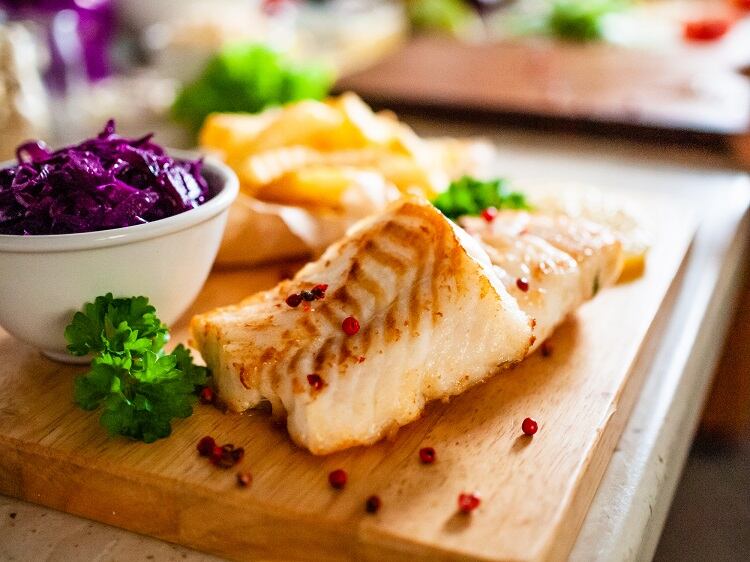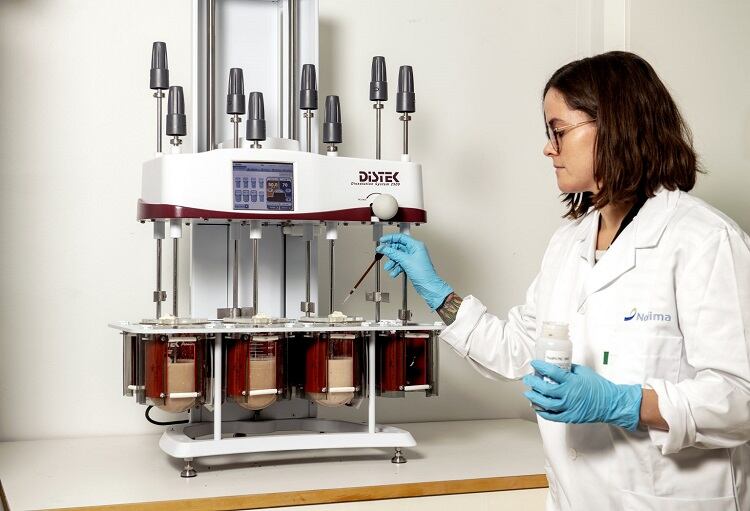As we strive towards a net zero future, industry must support a resource-efficient circular economy. This means reducing waste and loss in food production, and extracting the maximum value from resources.
Beneath the ocean’s surface, this is a growing concern. As much as 70% of aquatic resources harvested from the sea end up as low-value or waste products. In fillet production, for example, sometimes only 40% of the fish ends up on people’s plates.
Residual raw material is either further processed into feed products or disposed of as waste.
According to Nofima Institute researcher Silje Steinsholm, a greater proportion of this raw material should be used for human consumption. So what is the protein potential of fish offcuts?
Offcut proteins: the pros and cons
The proteins found in filleting offcuts are difficult to access. As a result, Steinsholm has used enzymatic protein hydrolysis to help convert these proteins into water-soluble peptides.
The process involves adding enzymes to the offcuts, which ‘act as scissors’ that cut the proteins into smaller and more water-soluble peptides – otherwise known as protein hydrolysate.
The water phase can be separated out and dried, which leaves a protein-rich powder that has ‘many areas of application’.

Aside from accessing the proteins, the other key challenge lies in the hydrolysates flavour, which has been described as ‘unappealing’ and ‘bitter’. Hydrolysate use is, therefore, limited.
Fish offcuts do have nutritional potential, however. “In general, fish offcuts have the same health benefits as the fish they are derived from, although the composition of the raw material has some variations depending on the different parts of the fish,” Steinsholm told FoodNavigator.
“For instance, mackerel backbones have somewhat higher contents of essential amino acids compared to the heads and viscera fractions, but all are highly nutritious. They hydrolysed products differ from the raw material as the lipid contents is removed. This increases the stability of the products as they are less susceptible to lipid oxidation but does remove the benefits from omega-3 fatty acids.”
Harnessing ‘magnetic tongue’ technology
According to Steinsholm, the flavour depends on hydrolysis parameters as well as the residual raw material being used during production. In order to remove the ‘off’ flavours, one must understand the relationships that exist between taste and chemistry.
Steinsholm’s research therefore started with the development of different flavours, chemical composition and functional properties. “The flavour and nutritional value of a certain product are important factors in terms of consumer choice, while the functional properties, such as the ability to form and stabilise emulsions, can be important production factors when changing the texture of a product,” noted Norway’s Nofima.

The researcher evaluated the importance of enzymes, residual raw material and membrane filtration in relation to the end product, and used a ‘magnetic tongue’ (NMR spectroscopy) – a predictive tool that measures sensory descriptors of foods – to determine which chemical substances produce flavour.
Steinsholm then connected these substances with objective measurements made by the taste judges of Nofima’s sensory panel.
The researcher identified a link between several small molecules found in living organisms, known as metabolites, and flavours, concluding that it is possible to remove the ‘very smallest’ metabolites via nanofiltration.
Findings revealed that the intensity of bitterness is produced by small peptides and depends on the choice of enzyme and the degree of hydrolysis.
Potential for industry
Steinsholm believes that knowledge about the production of hydrolysates with low flavour intensity will benefit the industry in relation to protein hydrolysate production for human consumption.
“A protein hydrolysate that is fairly taste neutral will be easier to incorporate into a variety of food products, offering a bioeconomical source for protein enrichment of formulated foods,” said Steinsholm.
“In addition, knowledge about the link between hydrolysate composition and specific sensory attributes makes it possible to remove and reduce the most unpalatable flavour contributors in the downstream processing.”
Concerning which players within the food industry will particularly benefit from these findings, Steinsholm pointed to primary food suppliers.
“Fisheries and fish farming industries will benefit from this research by increased valorisation of the raw material,” she explained.
“The use of hydrolysates based on fish cut offs are mainly limited to their sensory profiles. As we produce them now, it may be possible to include them in a product of similar sensory profiles, such as processed fishery products.”





